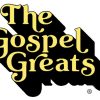chevron_left
-
 play_arrow
play_arrow
HCF-Radio LIVE
What Is Calypso Music?
Calypso is an Afro-Caribbean music genre that began in the nation of Trinidad and Tobago and spread throughout the West Indies. A close relative of West African kaiso, calypso music is an upbeat genre based on call-and-response singing and a syncopated 2/4 beat known as the calypso rhythm.
Calypso has spawned many subgenres, including soca music, mento, benna, spouge, ska, chutney, and extempo. A central figure in these styles is a griot, a lead singer who functions as a sage and a storyteller. Today’s griots frequently sing in English, documenting the travails of daily life and advocating for righteous justice.
A Brief History of Calypso Music
Calypso music first emerged in the eighteenth century in Trinidad among communities of African slaves. The musical style was an evolution of West African kaiso, and the satirical lyrics often mocked slave masters through double entendre. Over time, calypso evolved from a combination of French, English, Spanish, and African influences. The French brought the tradition of Carnival to the islands, and when Trinidad and Tobago abolished slavery in 1834, former slaves became stars of the Carnival, putting on calypso performances in dedicated calypso tents.
The first documented calypso music recording dates back to 1912, when Lovey’s String Band cut a recording while visiting New York City. Early twentieth-century stars of the genre included Julian Whiterose (aka the Iron Duke), Roaring Lion, Attila the Hun, and Lord Invader (whose song “Rum and Coca-Cola” was famously covered in the United States by the Andrews Sisters in a version falsely attributed to the American songwriter Morey Amsterdam). The most enduring stars of the genre rose to prominence in the 1950s, including Lord Kitchener and Mighty Sparrow.
4 Characteristics of Calypso Music
Like many forms of Caribbean music, calypso merges the rhythmic traditions of West Africa with the harmonic language of Spain, France, England, and other European nations. Other key elements of calypso include:
- 1. Folk origins: Many popular calypso hits are interpretations of Trinidadian folk songs.
- 2. English and French creole lyrics: Originally calypso singers sang in French creole (specifically Antillean creole), but as English became the dominant language of Trinidad and Tobago, most calypso lyrics migrated to the new tongue.
- 3. Lead vocals sung by a griot: A griot is a lead singer who functions as a storyteller, sage, poet, and historian wrapped into one. Many early calypso songs featured folkloric stories told by a griot, with call-and-response singing between them and the other calypsonians.
- 4. Frequent use of steel pan: The steel pan (or steel drum) is idiomatic to calypso. Steel bands made up of multiple steel pan players are common in Trinidad and Tobago.
What Does Calypso Music Sound Like?
Calypso music has a distinctive syncopated 2/4 or 4/4 rhythm. Common calypso instruments include a drum set, Latin percussion (such as bongos, congas, and timbales), bass guitar, acoustic or electric guitars, trumpets, trombones, saxophones, and multiple vocalists. Steel pan is also a common instrument in a calypso band.
5 Notable Calypso Musicians
History’s most notable calypso musicians include:
- 1. Lord Invader: One of the early calypsonians to achieve fame, he was known for his gravelly voice and his country folk veneer.
- 2. Lord Kitchener: Lord Kitchener began his career as a teenager in the 1930s and continued recording until his death in 2000. One of his best-known songs is “London Is the Place for Me.”
- 3. Harry Belafonte: Belafonte is Jamaican-American, not Trinidadian, but his music cuts across many cultures. He recorded calypso’s biggest hit with 1956’s “Day-O” (also known as the “Banana Boat Song”), an adaptation of a Jamaican folk song. Belafonte’s later calypso albums emphasize social justice, which remains an important topic for many contemporary calypsonians.
- 4. Growling Tiger: Neville Marcano, known to many by his stage name Growling Tiger, was one of the first calypsonians to bring overt politics to the genre. He frequently sang of Trinidad and Tobago gaining independence from Great Britain, which it would do in 1962.
- 5. Calypso Rose: Calypso Rose managed to break through the male-dominated calypso genre in the 1970s. Songs like “Gimme More Tempo” and “Come Leh We Jam” earned her both popular and critical acclaim.
Written by: HCFRAD_Admin
Cool music music Music themes Music wp themes Party Techno
Rate it
Similar posts
Recent Comments
No comments to show.Featured post

Latest posts
Current show
Upcoming shows

Old Skool
Jammin Old Skool Calypso
12:00 am - 6:00 am
Morning Praise
Gospel Greatest Hits.
6:00 am - 8:00 am
Morning Show
Presented by HCF Radio
8:00 am - 2:00 pm
Afternoon Show
2:00 pm - 8:00 pm

Fiyah Saturdays
With Nazty Nige
8:00 pm - 10:00 pmChart
HERE IT GOES YOUR COPYRIGHT TEXT. CAN ALSO CONTAIN LINKS LIKE THIS















![Miami 2019 [Soundcloud]](https://hcf-radio.com/wp-content/uploads/2020/06/pr-pod-05.jpg)


